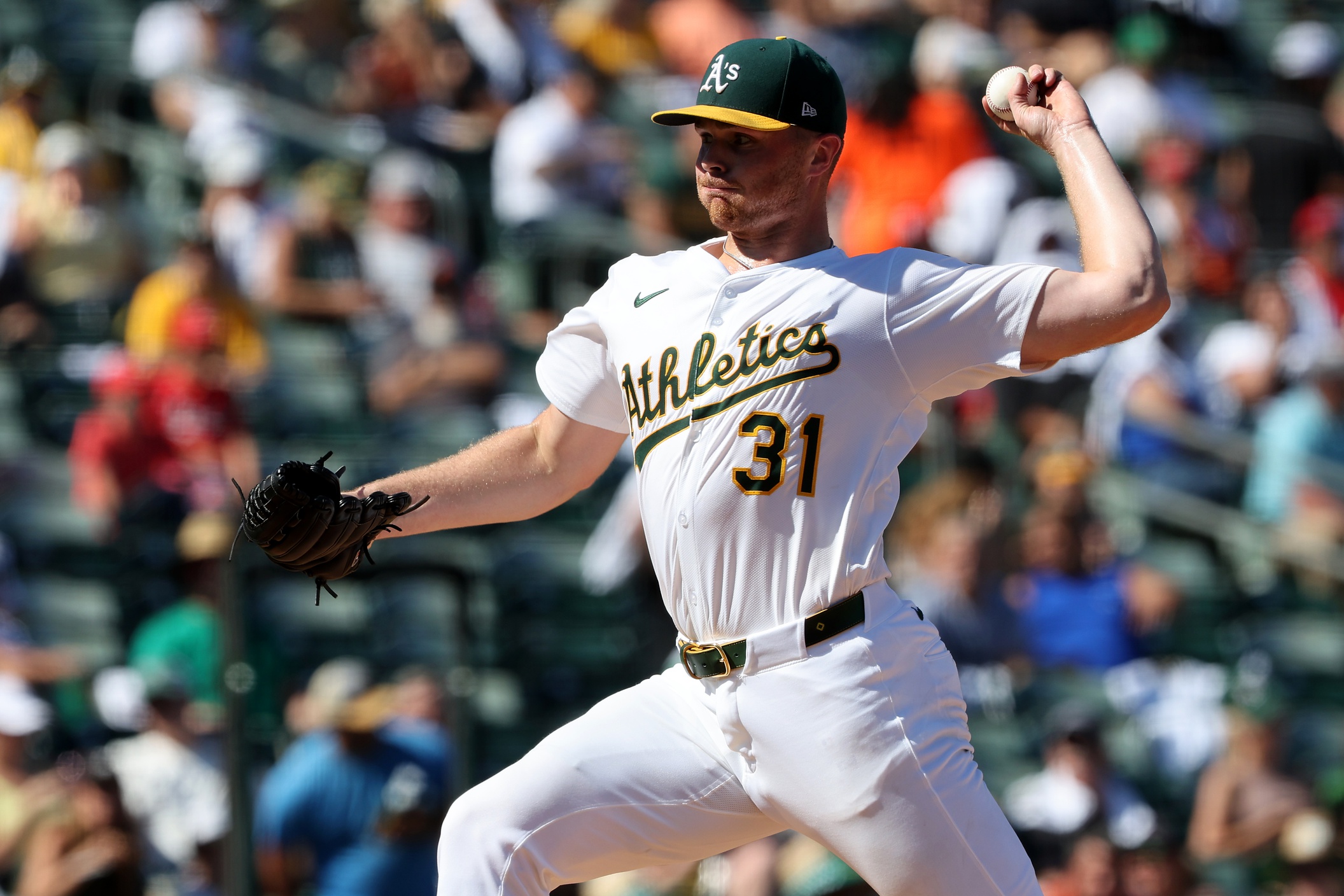There are two ways a White Sox player can be compared to Joe Borchard without requiring a hefty amount of sarcasm or cynicism.
- A canny trade salvaging an individual disappointment.
- Reaching the concourse at Sox Park on the fly.
Borchard holds the unofficial distance record at New Comiskey Park/U.S. Cellular Field/Guaranteed Rate Field with the 504-foot homer he launched off then-Phillie Brett Myers on Aug. 30, 2004:
It remains an indelible moment, although it's lost some of its grounding over the years. The stadium still had blue seats at the time, which tells you that it's a decade before Statcast and other trackers emerged on the scene. And once you clear the seats, there's no architecture to provide some context for what the ball actually reached on the fly. The 504-foot measurement, while possible, is a standard deviation above what Statcast shows is done at 35th and Shields.
Still, the reason the memory endures is because time has shown that reaching the concourse is damned difficult. It's a big year if it happens once, although the juiced ball might have doubled that number in 2019. Here's Nelson Cruz off Lucas Giolito ...
... and here's George Springer off Dylan Cease's first pitch of the game about three weeks later.
The White Sox haven't done it in a while, at least to left or right field. Eloy Jiménez reached the concourse over the shrubbery with a stair-climber against Washington's Patrick Corbin last June, which is more visually dramatic, but closer to home plate. Here's how the distances compare:
- Cruz off Giolito: 473 feet
- Springer off Cease: 467 feet
- Jiménez off Corbin: 462 feet
It's not surprising that visiting teams own the Statcast leaderboard at Guaranteed Rate Field, because they've certainly looked more comfortable hitting there as of late. Opponents held a 141-90 edge in homers against the White Sox at 35th and Shields in 2019. The White Sox needed to fix this problem in order to stand a chance in 2020, and Rick Hahn did what he could to put a dent in that column.
And that's why it was satisfying to see Luis Robert put a couple dents in the backdrop of Guaranteed Rate Field during Saturday's intrasquad game. First, he hit a rocket off Kelvin Herrera that bounced off the shrubbery in center and back on the field.
And then he came one row short of pulling a Borchard on a Steve Cishek spinner.
Watching games at Guaranteed Rate Field without the benefit of Statcast and PITCHf/x over the last week, it's taken me back to New Comiskey Park or the pre-renovation Cell. This time-travel aspect of these intrasquad affairs makes it a little easier to hyperbolize, because nobody can tell me Robert didn't get to 120 mph on that first laser. (It's also a little easier to relax, because I don't know Carlos Rodón's radar-gun readings, and the way his fastball is finding the seats even when hitters fail to stay on their feet, I don't think I want to.)
These games also mark the last week that Robert's game is automatically more art than science. The White Sox might have the Trackman data for most things he's done, but we don't, and the numbers took a backseat for those calling his games on the way up.
“The one he hit at our place was even more impressive because our ballpark is bigger,” [Birmingham broadcaster Curt] Bloom said. “The one that he hit at our place was legendary, legendary. Over the scoreboard. It was one where for whatever reason I was able to see the first bounce and I went out there the next day and you could barely see home plate. This is ridiculous. This is absolutely ridiculous that you could hit a ball that far.” [...]
Robert hit two homers in his first game (again) and finished with 16 home runs in 47 games in Charlotte. Comparing the impressive power he flashed at the highest minor-league level compared to the rest of his similarly gonzo season is complicated by the juiced Triple-A baseballs. Unless you’re of the belief that Robert was simply beyond the margin of error.
“His just went a lot further,” [Knights broadcaster Matt] Swierad said. “If it’s a regular baseball and we’re not playing with a ball that we think has been a little juiced up, it’s still going. I mean, he hit balls that were going close to 500 feet. Just tape-measure shots that looked effortless. I don’t think it would have any difference if it was a couple of years ago.”
Statcast has a way of flattening baseball's physical achievements, like when "the farthest home run I've ever seen" turns out to be a 448-footer topped by scores of other blasts that year. It doesn't ruin the experience, but it shifts a hitter's impressiveness from a thing he did one time to how often he can do it. It can't help but spoil a bit of the myth surrounding Robert.
Nevertheless, I remain curious to see how Robert's talents translate to the measurables, because there's chance it's prodigious enough that it's somehow more fun knowing the analytics underneath everything. The home runs are that long. The exit velocity is that high. He went from home to third that fast. He covered that much ground in so little time. I'm not counting on it, but maybe the lesson is that I shouldn't get caught up the count if the event jumps off the screen. The concourse doesn't really need a number.
* * * * * * * * *
It gets a little more serious tonight when the White Sox play the Cubs at Wrigley Field, as three different networks will be on hand to broadcast it.
Watch: ESPN, NBC Sports Chicago, Marquee
Lineups:






